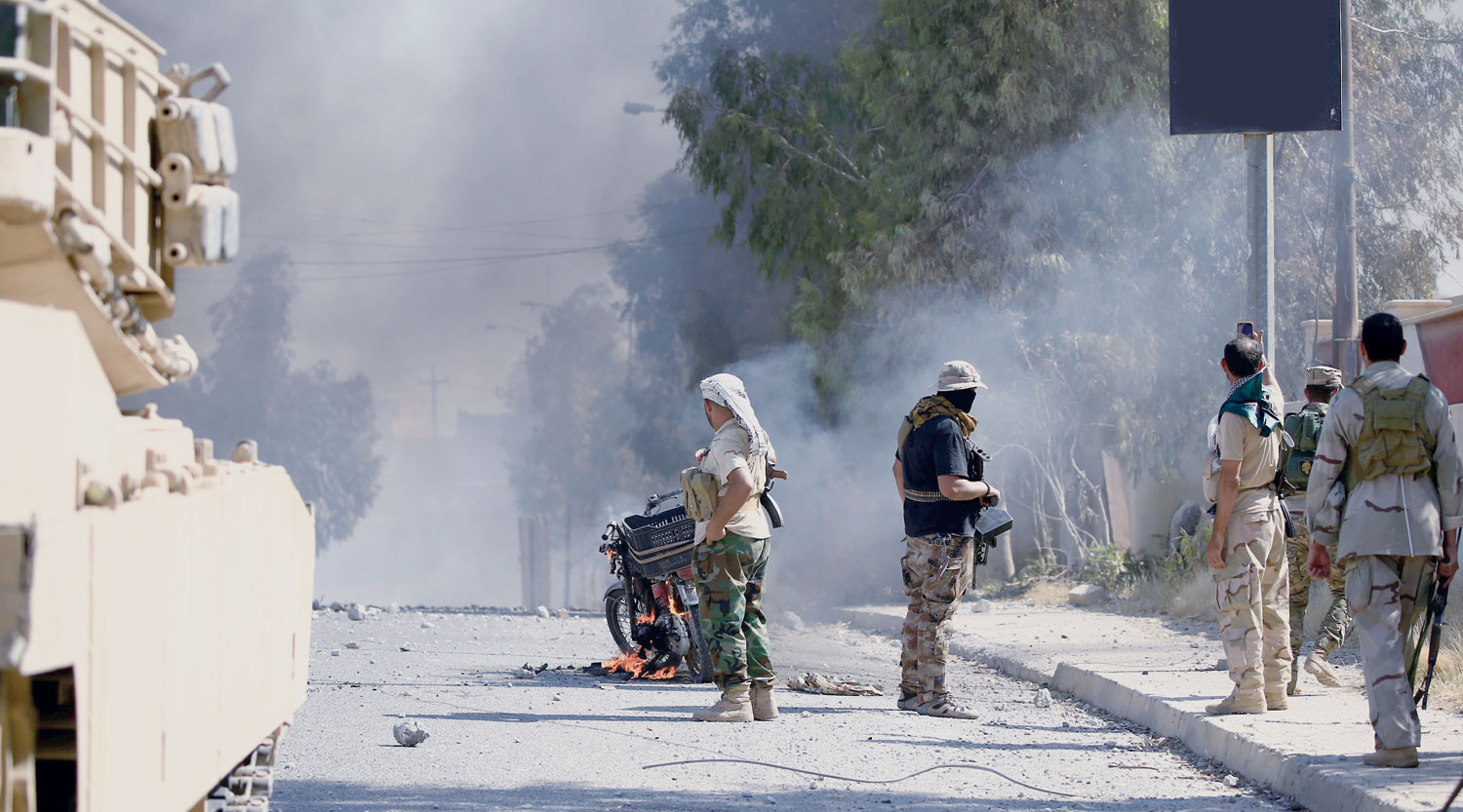

Iraqi forces announced on Saturday the ouster of IS militants from central Tal Afar and its historic citadel, leaving them poised to fully recapture one of the last IS urban strongholds in the country.
The advance, less than a week into an assault on the strategic city, comes after Prime Minister Haider al Abadi declared victory in July over the militants in Iraq’s second city Mosul, where IS declared its “caliphate” in 2014.
It came on the day of a visit to Baghdad by the French foreign and defence ministers during which a loan of 430 million euros ($512 million) was announced to help the Iraqi economy in the face of low oil prices and the cost of battling the militants.
“Units of the Counter-Terrorism Service liberated the Citadel and Basatin districts and raised the Iraqi flag on top of the citadel,” operation commander General Abdulamir Yarallah. The CTS and federal police units also seized three northern districts and the Al Rabia neighbourhood west of the citadel, after retaking the district of Al Taliaa to the south on Friday.
On Saturday, they battled IS militants around Al Ayadieh, 15 kilometres north of Tal Afar and strategically located on the road between the city and the Syrian border, said Yarallah.
Columns of smoke could be seen rising over the city after the Hashed al Shaabi paramilitary coalition fighting alongside government troops seized the Al Khadra and Al Jazeera districts.
Abbas Radhi, a Hashed al Shaabi fighter, said IS had resisted the advance mostly with sniper fire.”There are also booby-trapped cars, mortars. But they’ve been defeated, God willing,” he said.
Government troops and units of the Hashed al Shaabi, backed by a US-led coalition against IS, launched the assault last Sunday after weeks of coalition and Iraqi air strikes.
Tal Afar sits on a strategic route between IS-controlled territories in Syria and Mosul, 70 kilometres further east.
Progress in Tal Afar has been far more rapid than in Mosul, which only fell to Iraqi forces after a gruelling nine-month battle.
Officials have said they hope to announce victory in Tal Afar by Eid al Adha, the holiday set to start in Iraq on September 2.
Until its takeover by IS, Tal Afar was largely populated by Turkmen. Most of the city’s 200,000-strong population fled after IS seized it.
Some members of Tal Afar’s minority joined militant ranks, forming an IS contingent with a particular reputation for violence.
Pro-government forces faced an obstacle course of roads blocked with earth embankments and strategically-parked trucks, as well as sniper fire and mortar shelling.
Troops also said they discovered a network of underground tunnels used by IS to launch attacks behind lines of already conquered territory, or to escape.
The International Organization for Migration said “thousands of civilians” had fled Tal Afar since the offensive began.
Those who flee through desert areas face soaring temperatures putting them at risk of dehydration, said Viren Falcao of the Danish Refugee Council.
Officials have said the capture of the city would make it even more difficult for the militants to transport fighters and weapons between Iraq and Syria.
The militant group has lost much of the territory it controlled and thousands of its fighters have been killed since late 2014, when a US-led international coalition was set up to defeat the group. Iraq announced the “liberation” of Tikrit, 160 kilometres north of Baghdad, in early 2015.
The group’s biggest defeat was in Mosul, where some 30,000 Iraqi forces backed by US-led air support launched a vast operation in October.
Three months later, they retook the Mosul’s east and turned their attention to the west, finally declaring the whole city “liberated” on July 9. — AFP
Oman Observer is now on the WhatsApp channel. Click here



